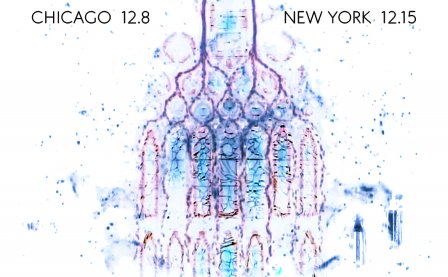Thoughts Of A Dot As It Travels A Surface is Christina Vantzou and John Also Bennett’s interpretation of wall drawings by the artist Zin Taylor, made for his show “Creative Writing” at Westfälischer Kunstverein in Münster. In the hands of Vantzou and Bennett, Taylor’s splayed and flattened landscape of natural and almost-natural forms, a black-and-white desert of contorted cacti, becomes something like a landscape of sound, a spacious mixture of droning, buzzing, and beeping things.
Is there such a thing as a non-arbitrary performance of a graphic score, whether that happens in the relatively conservative, formalized space opened up by a solitary composer in the tradition of John Cage or, as is the case for Thoughts Of A Dot As It Travels A Surface, in public, together, and of a graphic work not strictly presented as a score? Yes and no, probably. I don’t personally think Vantzou and Bennett’s album sounds “like” Zin Taylor’s wall drawing, and I don’t know how it could. Still, the choices made by each in recording it reflect some encounter between their intuitions, their reactions to one another, and their reactions to a space transformed by Taylor. The album verifies that the place made by Taylor could, if only once and for about 43 minutes, sound like this.
Vantzou and Bennett begin in a more ecological mode, faithfully evoking presences of moving water and trees on the first couple of tracks, before their performance veers in a more abstract direction, returning only once or twice to those representational figures. The breathy, delaying melody of “Large Suess Plant,” the dense low-end and forceful electronics of “Alfred Hitchcock Haze,” the gentlety of “Rock House with Door,” the resonant droning of “Nub with Three Wraps of Fabric,” and the obscure piano of “Fingers of Thought” all hold tones and textures that, even in their diversity, work in a way here that doesn’t feel random. It’s uncalculated, but natural. The result of their combination is, I think, an interesting and important example of music based on graphic material, and a piece of work that relates productively with traditions from New Age, indeterminate composition, and electroacoustic improvisation. At times, it becomes austere, matching Taylor’s drawing in its monochrome; at others, it becomes rich, differentiated, and full.
More about: Christina Vantzou, John Also Bennett, Zin Taylor




